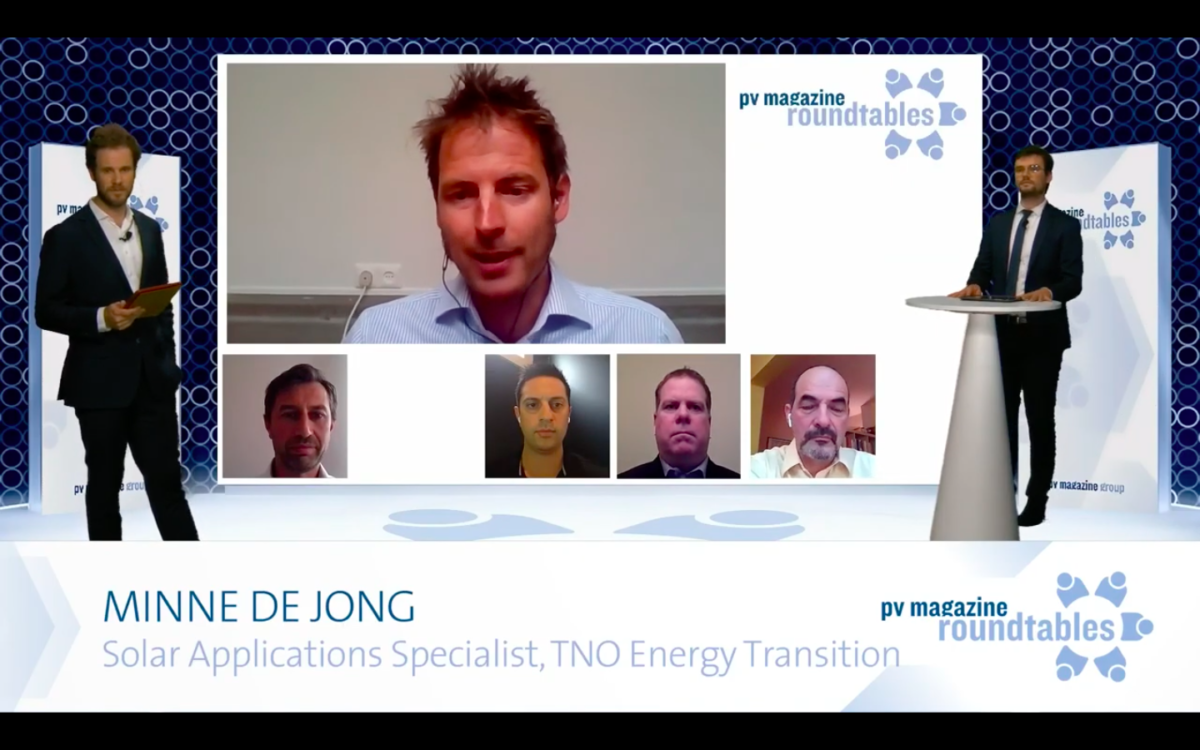With innovations flooding into the PV market at a rapid pace, teething pains can be a feature. This year's pv magazine Quality Roundtable, held on June 9, addressed just this, with a discussion ranging from trackers to modules to BOS components. While there have been issues with cell cracking of larger wafers, wind instabilities in two-in-portrait trackers, or corrosion and stability issues in floating PV systems, the ensemble of experts at this session said that there are also production, handling, and O&M solutions to these quality concerns.
Thorsten Kray, head of building aerodynamics at I.F.I. Aachen and David Banks, president of CPP Wind Consultants, kicked off the event with a discussion over the mechanics behind torsional instabilities. Increasing stiffness by either shortening the table length or by setting up a locking mechanism at each post is one of the fixes that the wind tunnel experts suggested.
“Every tracker company should understand wind dynamics, wind tunnel studies, and they are now part of the design process for most systems,” explained James Butcher, a senior engineer with Nextracker. He explained how the company addressed the issue. “However, what we see is that not all wind tunnel tests are created equal and that there are multiple wind dynamics at play.”
This year will likely go down as the year of “500W+ modules”. The enhanced power ratings are enabled by larger wafer formats, raising some concerns about cell cracking in the manufacturing processes.
“We offer inline color detection after PECVD. So when the cells come out of the furnace, we are able to determine the quality for each batch at each furnace level,” said Craig Snee, technical sales director with ET Solar. The company has launched a module with a larger M6 wafer format this year.
George Touloupas, director of technology and quality at CEA added: “Damage-free cutting is something that is absolutely needed for bigger wafers, especially 210mm cut into three. Manufacturers are aware that the current way of cutting might be okay for cutting into two pieces of a small wafer, but it is not okay for the big wafers to be cut in three.”
Other hot topics of the session included a discussion on gallium doping to prevent LID, as module manufacturer Longi has adopted the technology. A panel discussion between various stakeholders and scientists on quality in floating PV arrays has also concluded the Quality Roundtable.
A big thanks to the sponsors of Virtual Roundtables Europe 2020 from pv magazine
Click here, to see the links to the event's sponsors
In the networking area of the event app, those who registered for the event can download the presentations from the individual agenda entries -> to the event app
Session 2: Quality Roundtable
With strong winds having caused catastrophic failures at several PV arrays in recent years, managing the hidden risk is at the forefront of developer, investor and supplier minds. New module technologies boost power but also raise quality questions. Floating also presents several hidden risks.
Intro:
Jonathan Gifford, Editor in Chief, pv magazine
Marian Willuhn, Editor, pv magazine
Impulse:
Jonathan Gifford, Editor in Chief, pv magazine
Discussion:
Thorsten Kray, Head of Building Aerodynamics, Institute for Industrial Aerodynamics Aachen (IFI)
David Banks, President, CPP Wind Engineering
Talk:
James Butcher, Project Engineer, NEXTracker
Monsoon Wang, Product Director, LONGi Solar
Craig Snee, Technical Sales Director, ET Solar
Lou Trippel, Vice President of Product Management, First Solar
Audience Q&A
George Touloupas, Director of Technology & Quality, CEA
Talk
Filippo Carzaniga, Chairman of the Board, FIMER Group
Panel discussion
Eric Ast, Head of Business Development Alternative Energies, Stäubli Electrical Connectors
Ben Macias, Vice President Sales, Shoals Technologies Group
George Touloupas, Director of Technology & Quality, CEA
Minne de Jong, Solar Applications Specialist, TNO Energy Transition
Craig Snee, Technical Sales Director, ET Solar
The videos of the other sessions of the pv magazine Virtual Roundtables Europe 2020 will be published within the next days including:
- Sustainability
- PPA & hydrogen
This content is protected by copyright and may not be reused. If you want to cooperate with us and would like to reuse some of our content, please contact: editors@pv-magazine.com.




By submitting this form you agree to pv magazine using your data for the purposes of publishing your comment.
Your personal data will only be disclosed or otherwise transmitted to third parties for the purposes of spam filtering or if this is necessary for technical maintenance of the website. Any other transfer to third parties will not take place unless this is justified on the basis of applicable data protection regulations or if pv magazine is legally obliged to do so.
You may revoke this consent at any time with effect for the future, in which case your personal data will be deleted immediately. Otherwise, your data will be deleted if pv magazine has processed your request or the purpose of data storage is fulfilled.
Further information on data privacy can be found in our Data Protection Policy.